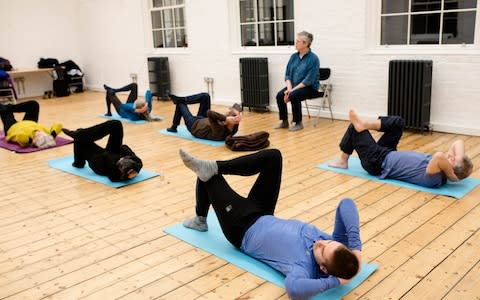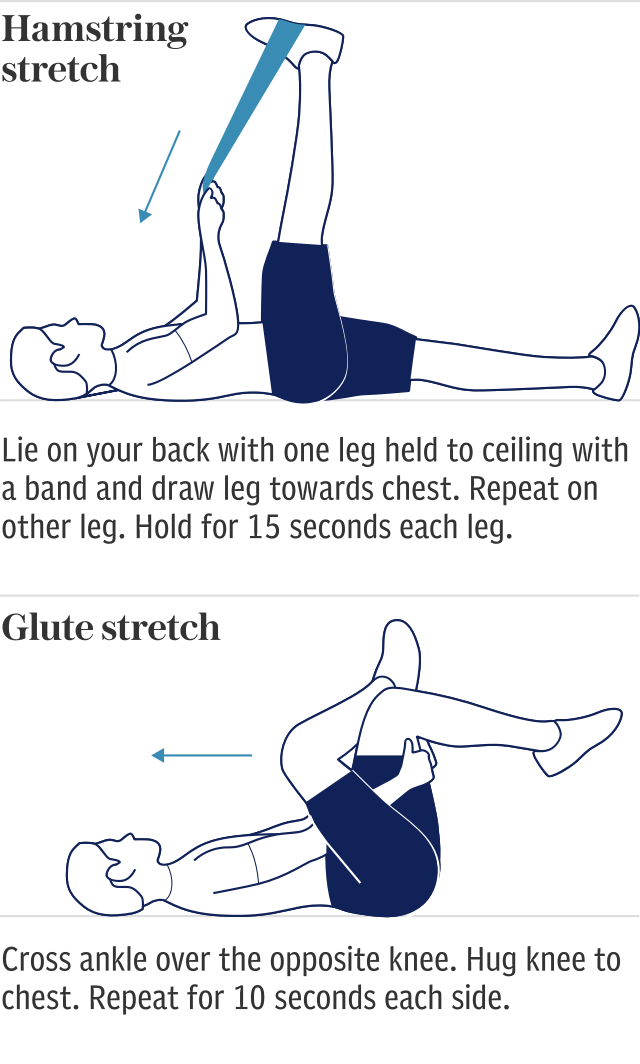The truth about Feldenkrais, the movement method fans call 'wizardry'

Mention “Feldenkrais” and the response tends to be a blank stare, followed by a quizzical expression as to whether an expletive, or unfortunate sneeze, has just been emitted. The “funny F-word,” as practitioner Ryan Jansen calls it, may not roll off the tongue, but its followers are nigh-on evangelical, hailing the breath-movement technique as nothing short of wizardry. Indeed, at Jansen’s clinic in east London (feldenkraislondon.com), where the waiting list is a month long and filled with actors, sports stars and a few circus performers, the converted arrive in their droves for sessions with him and fellow practitioner Scott Clark.
Billed by the Feldenkrais Guild UK as a means of combining “movement, breathing and body alignment in a context of mindfulness”, and a practice that “offers a unique and practical way to realise physical and mental potential”, the Feldenkrais Method is not, it insists, “just pushing muscles around, but changing things in the brain itself”.
The Felden-kurious can explore the technique either through Awareness Through Movement sessions, group classes which involve going through a sequence of sometimes unusual steps in order to release areas of chronic tension and create potential for movement, or one-to-one appointments.
An alternative therapy with scant scientific backing that comes with rave reviews? Worth trying, undoubtedly, if you’ve got money to burn and a social media account in need of a few likes from the #wellness crowd. My own interest is more personal: after my sister Natasha, 29, sustained a hamstring injury that had seen no improvement from traditional treatments, Feldenkrais – named after its creator, Israeli engineer Moshe Feldenkrais – put her to rights.
“I come away from every session amazed by the intricacies of the human body, often exhausted by the precision of the exercises,” she says of Jansen’s tutelage, which involves “everything from opening up the balls of my feet to getting the fibula heads in my knees rotating properly”. Previously unable to walk properly after the strain, she says: “I learn something new after every appointment, and have a much better awareness of how I’m using my body.”

In places such as Israel, San Francisco and Germany, the status of the 100-year-old method is akin to that of Pilates or yoga, but here in Britain it is a far smaller enterprise, with around 120 practitioners registered to its UK guild. Overseas, Jansen says, it is largely used by sports professionals; here, it is more commonly undertaken by those in the arts, or medical workers, from doctors to massage therapists.
Kat Mackenzie, a 37-year-old company director, sought out Feldenkrais after suffering knee problems ahead of the London Marathon. “I walked into the clinic with a limp,” she recalls, but says taking sessions every few months, and practicing at home with the help of audio packs, has made her able to run again “totally pain-free” for the past three years. Crucially, she adds: “I have managed to get bits of my body to talk to each other again.”
Successful, then, but in matters of scientific clout, Feldenkrais is wanting: the guild’s website states that it can aid “neurological conditions such as multiple sclerosis, the symptoms of a stroke and cerebral palsy”, but a 2015 review by the Australian Department of Health found no clear evidence of its efficacy.
That is not lost on Jansen, 41, a physiotherapist who was introduced to Feldenkrais in his native Australia, to rectify back fractures sustained playing Aussie rules football.

He knows what it’s like to have to be told “six times” to try Feldenkrais after other therapies failed, and admits that his own jam-packed diary is due to having a recognised health degree, which puts potential sceptics at ease. “I was seeing the best physios in the world – and doing Pilates,” he recalls of his injuries, yet improvements were elusive. “They weren’t causing me pain, but I lost what made me good at sport – speed and ability to react.
“In my first Feldenkrais session, I was moved in ways that invited my pelvis to sync up with my head again, and I floated off that couch.” He says that inaugural meeting still has the edge over fatherhood as “the most powerful moment” of his life. After training as a practitioner he opened his clinic in 2016.
The technique is something of a trust exercise – an hour in which you are moved by, and move under the instruction of – your tutor. The activity is minimal; a twist at the waist, perhaps, or turning to look over your shoulder, but for those who attend regularly and, most importantly, keep up practice at home, the results can be impressive.
In Britain, though, it still has an image problem – a lot of which comes back to that fiddly name, Jansen says. The lack of celebrity endorsements hasn’t helped its cause, either; the UK guild lists its biggest names as the violinist Yehudi Menuhin and Jenni Murray. But just as Madonna brought Pilates to the wider world, Feldenkrais has all the makings of a lifestyle trend – perhaps it’s just one A-list #wellness selfie away from propulsion into the mainstream.
To find a Feldenkrais practitioner, see feldenkrais.co.uk

 Yahoo News
Yahoo News 
